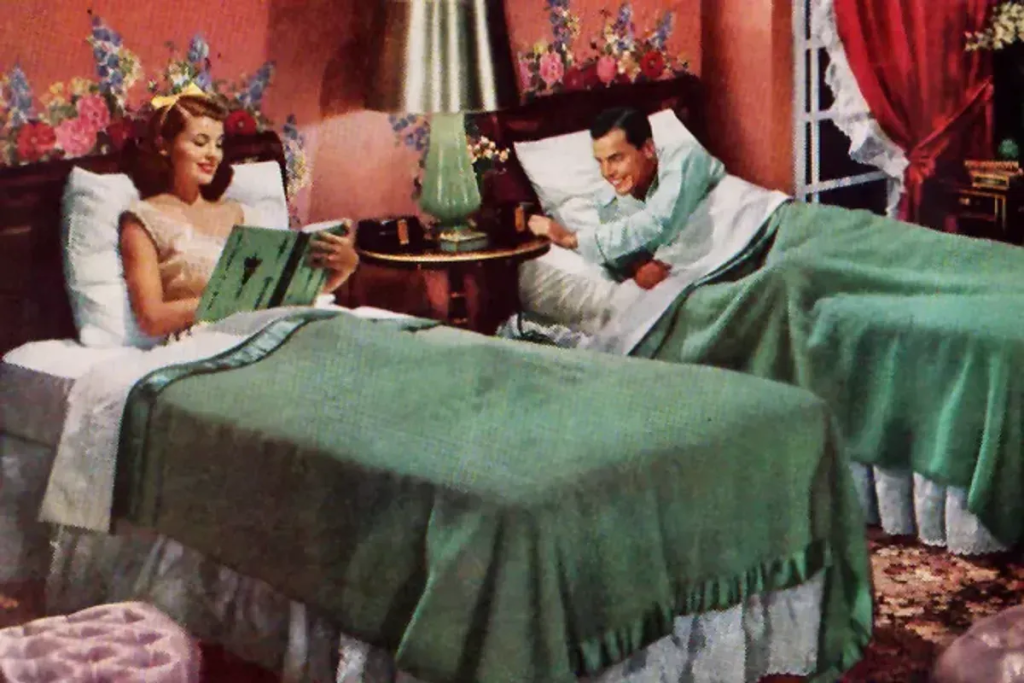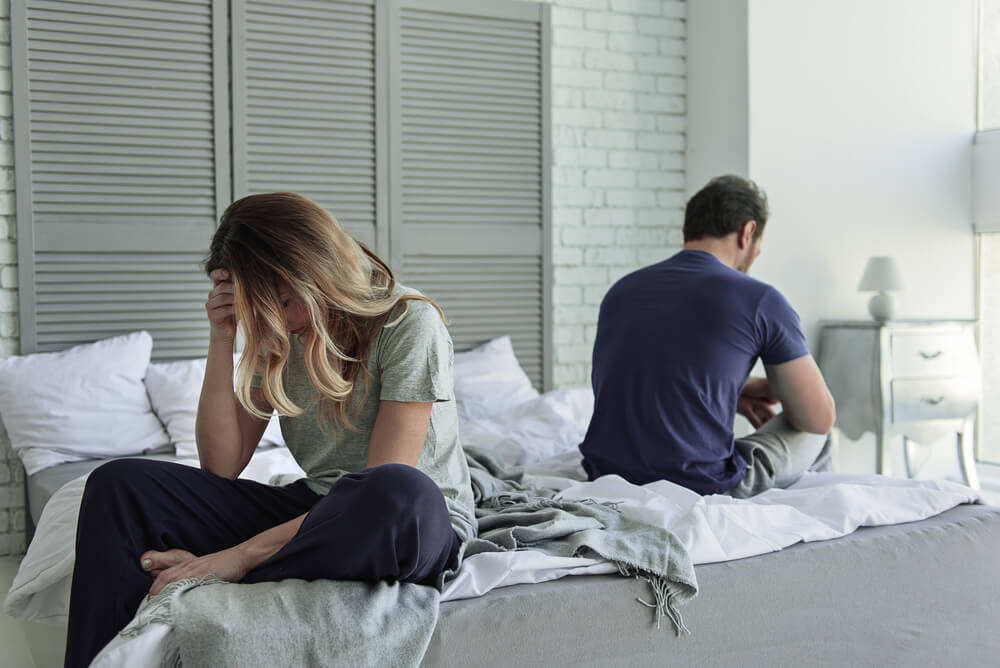The way married couples sleep has evolved significantly over time. While today, most spouses share a bed, this wasn’t always the case. In fact, during the late 19th and early 20th centuries, it was common for couples to sleep in separate beds. This practice, shaped by cultural, medical, and social beliefs, may seem unusual today, but it had strong reasoning behind it.
Understanding the history of sleeping arrangements gives us a glimpse into how society viewed marriage, health, and personal space. So, why did couples choose separate beds, and what led to the shift toward sharing one? Let’s explore the fascinating evolution of this tradition.
cultural norms and social expectations

In many Western societies, especially during the Victorian era, modesty and decorum were deeply valued. Even within marriage, maintaining a certain level of propriety was considered essential. Sharing a bed was seen as too intimate for the standards of the time, while separate beds promoted a sense of personal space and refinement.
During this period, wealthier households often had large homes with multiple rooms, making separate sleeping arrangements possible. This was particularly true in upper-class families, where maintaining a sense of individuality within the marriage was highly regarded.
health and hygiene considerations
In the 19th and early 20th centuries, concerns about hygiene and disease transmission influenced sleeping arrangements. Medical knowledge was advancing, and people became more aware of how illnesses spread. Many doctors recommended separate beds as a way to prevent the transmission of contagious diseases between spouses.
Additionally, personal hygiene practices were not as frequent or advanced as they are today. Without regular bathing or access to modern plumbing, separate beds helped minimize the effects of body odors and cleanliness issues. This was particularly important in an era when health conditions such as tuberculosis, influenza, and other infectious diseases were major concerns.
the influence of victorian morality
Victorian-era morality played a huge role in shaping daily life, including the way married couples slept. Society promoted strict moral codes that emphasized modesty, restraint, and clear distinctions between gender roles. Even in marriage, intimacy was something to be approached with caution, and separate sleeping arrangements were often seen as a way to uphold these values.
This wasn’t necessarily a sign of a lack of affection between spouses. Instead, it was a reflection of the belief that maintaining a certain degree of separation and control over physical intimacy was important for a proper and respectable marriage.
the role of furniture design and availability
By the late 19th and early 20th centuries, twin beds became widely available, and furniture manufacturers began marketing them as the modern, sophisticated choice for married couples. These beds were often advertised as a way to promote hygiene, comfort, and personal space.
As twin beds gained popularity, they became a symbol of progress. Many couples embraced them as part of a growing movement toward modernity, believing that separate beds were a sign of an advanced and health-conscious household.

medical beliefs and the impact on sleeping habits
Medical advice further reinforced the idea that couples should sleep separately. Doctors of the time believed that sleeping in the same bed could lead to restless nights, poor sleep quality, and even negative health effects.
Many medical professionals claimed that individuals needed uninterrupted rest for optimal health. Sharing a bed often meant dealing with a partner’s snoring, tossing, or different sleep schedules, which could lead to sleep deprivation. As a result, separate beds were recommended as a solution for better physical and mental well-being.
economic factors and household space
While separate beds were common in wealthy households, economic conditions often influenced sleeping arrangements for lower-income families.
- Wealthier families had the luxury of space and additional bedrooms, making separate sleeping arrangements more feasible.
- In middle-class and working-class households, space limitations often dictated that couples share a bed out of necessity rather than preference.
- Despite limited space, some middle-class couples still adopted separate beds as a status symbol, imitating the sleeping habits of the upper class.
Even when space was tight, the idea of separate sleeping areas remained appealing to many, often as a reflection of social aspirations.
the shift in attitudes during the 20th century

As the 20th century progressed, societal views on marriage and intimacy began to shift. Several factors contributed to the growing preference for shared beds:
- World Wars and economic challenges – The two World Wars and the Great Depression brought about significant lifestyle changes, making practicality more important than social conventions. Many couples found comfort in sharing a bed during difficult times.
- Advancements in psychology – The rise of psychoanalysis and discussions on emotional intimacy in marriage led to a greater emphasis on closeness between spouses. Couples were encouraged to share experiences, including sleeping in the same bed, to strengthen their emotional connection.
- Hollywood and pop culture influence – By the mid-20th century, movies and television began depicting married couples sharing a bed. This representation helped normalize the idea, making separate beds seem outdated.
By the 1950s and 1960s, the idea of married couples sleeping in the same bed became the norm, replacing the once-popular twin-bed arrangement.
modern perspectives on sleeping arrangements

Today, the idea of separate beds in marriage is seen as a personal preference rather than a societal expectation. While most couples share a bed, some choose separate sleeping arrangements for practical reasons.
- Different sleep schedules – If one partner is a night owl and the other an early riser, separate beds allow both to get better rest.
- Snoring and sleep disturbances – Many couples opt for separate beds due to snoring, restless sleeping, or medical conditions that impact sleep quality.
- Personal comfort – Some individuals simply sleep better alone and prefer having their own space at night.
Unlike in the past, modern sleeping arrangements are based on comfort and choice rather than cultural or medical pressures. There is no longer a stigma around separate beds, and couples prioritize what works best for their relationship.
conclusion: reflecting on historical practices
The history of married couples sleeping in separate beds offers a fascinating glimpse into how societal values, medical beliefs, and economic factors have shaped relationships over time. What was once a widespread practice based on health concerns, morality, and social status has evolved into a more flexible and personal decision.
Today, the most important factor in choosing a sleeping arrangement is individual comfort and relationship dynamics. Whether couples share a bed or sleep separately, the emphasis is now on what enhances their well-being and strengthens their bond.
Looking back at history reminds us that societal norms constantly change, and marriage, like everything else, continues to adapt to new ideas and priorities


